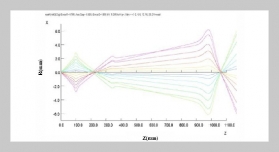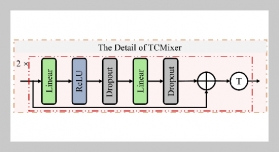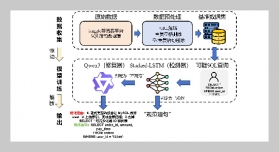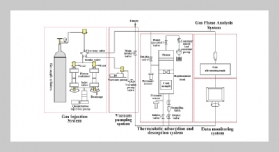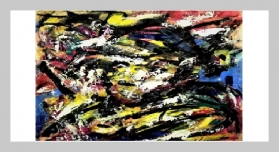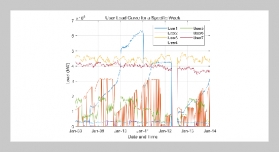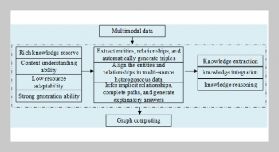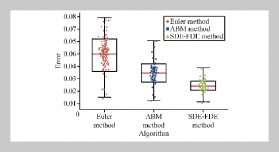REFERENCES
- [1] Valavanis, K., et al., Handbook of Unmanned Aerial Vehicles, Springer Netherlands 2015, Print + eBook ISBN 978-90-481-9708-8. doi: 10.1007/978-90-4819707-1
- [2] Umezu, S., et al., “Bio-inspired wing-folding mechanism of micro air vehicle (MAV),” Artif Life Robotics, Vol. 22, p. 203 (2017). doi: 10.1007/s10015-0160339-9
- [3] Raul, et al., Advanced Composite Materials for Aerospace Engineering, Edition: 1st, Publisher: Woodhead Publishing, Elsevier, ISBN: 9780081009390. doi: 10.1016/B978-0-08-100037-3.00001-8
- [4] Mueller, T. J., et al., Introduction to the Design of Fixed-wing Micro Air Vehicles: Including Three Case Studies, AIAA 2007, ISBN-13: 978-1563478499, ISBN-10: 1563478498. doi: 10.2514/4.862106
- [5] Hicks, G. et al., “Multidisciplinary Design and Prototype Development of a Micro Air Vehicle,” Journal of Aircraft, Vol. 36, No. 1, pp. 227�234 (1999). doi: 10.2514/2.2429
- [6] Truong, Q. T., et al., “Design and Demonstration of Insect Mimicking Foldable Artificial Wing Using Fourbar Linkage Systems,” Journal of Bionic Engineering, Vol. 11, No. 3, pp. 449�458 (2014). doi: 10.1016/ S1672-6529(14)60057-3
- [7] Albertani, et al., “Wind Tunnel Testing of Micro Air Vehicles at Low Reynolds Numbers,” SAE World Conference, Reno, NV, November (2004). doi: 10. 4271/2004-01-3090
- [8] Anderson, J., Fundamental of Aerodynamics, Fifth Edition, McGraw-Hill (2011), ISBN 978-007-128908-5. doi: 10.1017/S000192400000676X
- [9] Secanell, M., et al., “Design of a Morphing Airfoil Using Aerodynamic Shape Optimization,”AIAAJournal, Vol. 44, No. 7 (2006). doi: 10.2514/1.18109
- [10] Hyer, M., Stress Analysis of Fiber-reinforced Composite Materials, McGraw-Hill (1998). doi: 10.1017/ S0001924000096366
- [11] Whitcomb, J. D., et al., “Analysis of Plain Weave Composites Subjected to Flexure,” Mechanics of Composite Materials and Structures, Vol. 5, No. 1, pp. 41� 53 (1998). doi: 10.1080/10759419808945892
- [12] Lee, D., et al., “Aeroelastic Studies on a Folding Wing Configuration,” 46th AIAA/ASME/ASCE/AHS/ASC Structures, Structural Dynamics & Materials Conference, (Austin, Texas), April (2005). doi: 10.2514/6. 2005-1996
- [13] Tang, D., et al., “Theoretical and Experimental Aeroelastic Study for Folding Wing Structures,” Journal of Aircraft, Vol. 45, pp. 1136�1147 (2008). doi: 10.2514/ 1.32754
- [14] Wlezien, R., et al., “Aircraft Morphing Program,” Proc. SPIE Conference on Smart Structures and Materials, Vol. 3326, (San Diego, California), pp. 176�187 (1998). doi: 10.1117/12.310633
- [15] Haftka, R., et al., Design and Optimization of Laminated Composite Materials, Wiley, New York (1999). doi: 10.1.1.170.9445
- [16] Backman, D., et al., “Composite Materials and Joining Technologies for Composites,”Proceedings of the 2012 Annual Conference on Experimental and Applied Mechanics, Vol. 7, eBook ISBN 978-1-4614-4553-1. doi: 10.1007/978-1-4614-4553-1
- [17] Stanewsky, E., “Aerodynamic Benefits of Adaptive WingTechnology,”AerospaceScienceandTechnology, Vol. 4, No. 7, pp. 439�452 (2000). doi: 10.1016/S12709638(00)01069-5
- [18] Chua, C. K., et al., 3D Printing and Additive Manufacturing: Principles and Applications, Fifth edition, World Scientific Publishing Company Pte Limited (2016). doi: 10.18063/IJB.2016.02.002
- [19] Wereley, N. M., et al., “Morphing Wings of a Small Scale UAV Using Inflatable Actuators for Sweep Control,” AIAA-2003-1802 (2003). doi: 10.2514/6.20031802
- [20] Lind, R., et al., “Roll Control for a Micro Air Vehicle Using Active Wing Morphing,” AIAA Paper AIAA2003-5347 (2003). doi: 10.2514/6.2003-5347
- [21] Ng, T. and Leng, G., “Application of Genetic Algorithms to Conceptual Design of a Micro Air Vehicle,” Engineering Applications of Artificial Intelligence, Vol. 15, No. 5, pp. 439�445 (2002). doi: 10.1016/S09521976(02)00072-6
- [22] Bowman, J., et al., “Development of Next Generation Morphing Aircraft Structures,” AIAAPaper 2007-1730, 48th AIAA/ASME/ASCE/AHS/ASC Structures, Structural Dynamics, and Materials Conference, Honolulu, Hawaii, 23�26 (2007). doi: 10.2514/6.2007-1730
- [23] Lau, F., et al., “Aero-structural Optimization and Performance Evaluation of a Morphing Wing with Variable Span and Camber,” Journal of Intelligent Materials, Systems and Structures, Issue published: July 1 (2011). doi: 10.1177/1045389X11416031
- [24] Basri, M. H., et al., “Optimization of Aerodynamic Efficiency for Twist Morphing MAV Wing,” Chinese Journal of Aeronautics, Vol. 27, No. 3, pp. 475�487 (2014). doi: 10.1016/j.cja.2014.04.017


![Foldable wing MAV [4]. Development of Foldable Wing Structures for Micro Air Vehicles](/images/article_images/21/21_2_13.jpg)
